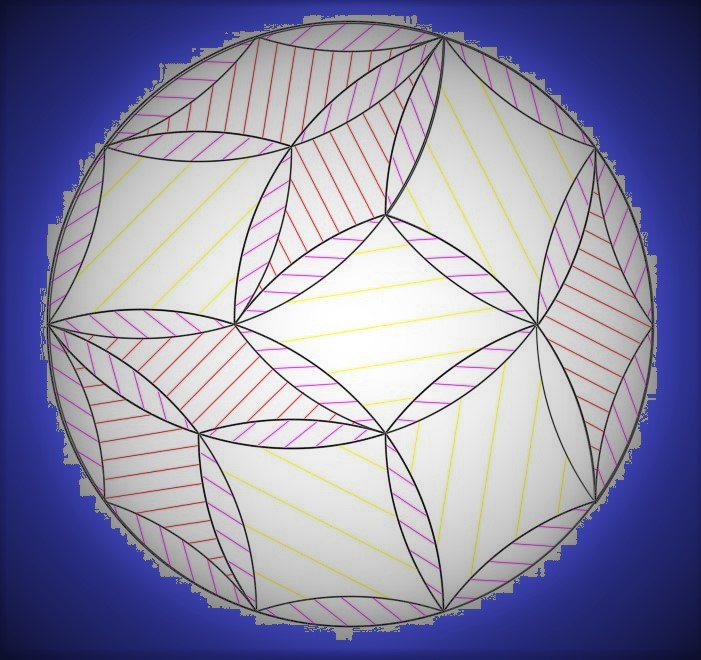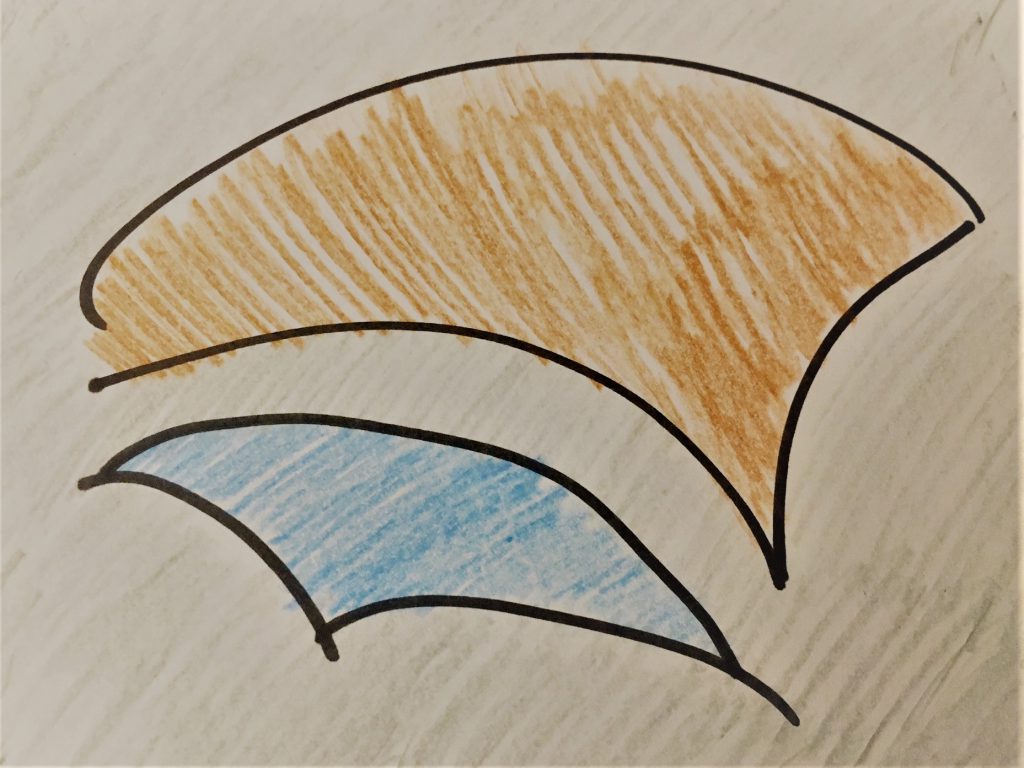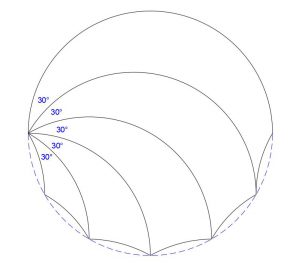Tim has previously written guest posts here about tiling by tricurves, and is now looking at ways of tiling with other shapes.

In an earlier post elsewhere I covered some basic arc-sided shapes that tile by themselves. Lately I’ve been playing with groups of curved tiling shapes, asking a question common for me: how to get the most play value as an open-ended puzzle? This means getting the most interesting possibilities from the simplest set. “Interesting” includes variety, complexity, challenge and aesthetic appeal. “Simplest” covers not only size of set and the shapes, but also the least total information needed to describe or construct the shapes.


